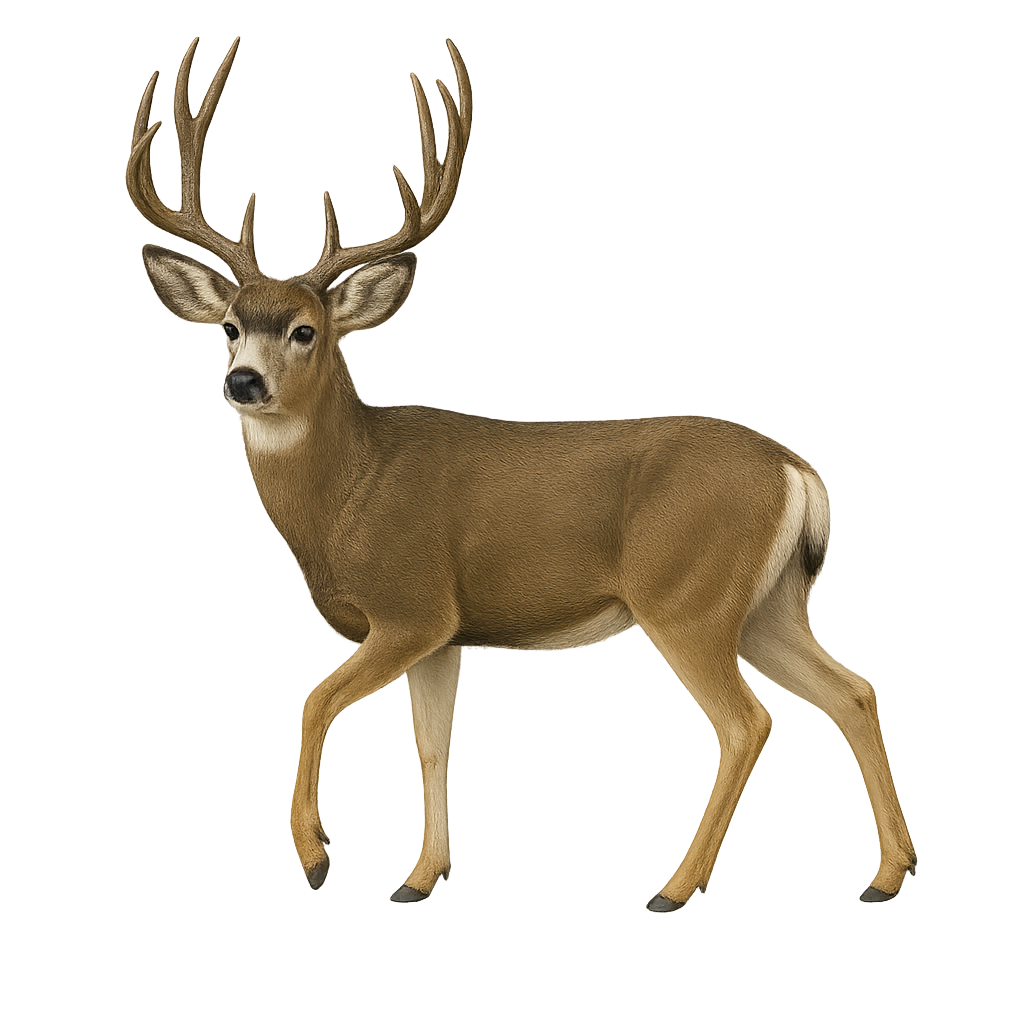Your wildlife photography guide.
Explore the mule deer in detail, study its behavior, prepare your shots.
Where to observe and photograph the mule deer in the wild
Learn where and when to spot the mule deer in the wild, how to identify the species based on distinctive features, and what natural environments it inhabits. The WildlifePhotographer app offers tailored photography tips that reflect the mule deer’s behavior, helping you capture better wildlife images. Explore the full species profile for key information including description, habitat, active periods, and approach techniques.
Mule deer
Scientific name: Odocoileus hemionus

IUCN Status: Least Concern
Family: CERVIDAE
Group: Mammals
Sensitivity to human approach: Suspicious
Minimum approach distance: 50 m
Rut period: November to December
Gestation: 190-200 jours
Births: May to June
Habitat:
Open forests, grasslands, mountains
Activity period :
Active at dawn and dusk, ideal moments for observation.
Identification and description:
The mule deer is a North American deer species known for its large, mule-like ears. Its coat ranges from gray to brown, becoming lighter in winter. Males have branched antlers that they shed annually. Adapted to rugged terrain, they prefer mountainous and open forest habitats. Primarily herbivorous, they feed on leaves, grasses, and young shoots. Mule deer are social animals, often forming small groups, especially in winter. They are generally wary, making them challenging to approach.
Recommended lens:
400 mm – adjust based on distance, desired framing (portrait or habitat), and approach conditions.
Photography tips:
To photograph the mule deer, it's advisable to use a telephoto lens of at least 400mm to capture detailed images from a distance. The best times to observe them are early morning or late afternoon when they are more active. Be patient and quiet to avoid scaring them away. Use a tripod to stabilize your camera and adjust ISO settings according to available light. Take advantage of natural landscapes to add depth to your photos.
The WildlifePhotographer App is coming soon!
Be the first to explore the best nature spots, track rutting seasons, log your observations, and observe more wildlife.
Already 1 430 wildlife lovers subscribed worldwide

